

How to Make Dandelion Wine: 13 Steps. This article was co-authored by our trained team of editors and researchers who validated it for accuracy and comprehensiveness. wikiHow's Content Management Team carefully monitors the work from our editorial staff to ensure that each article is backed by trusted research and meets our high quality standards.
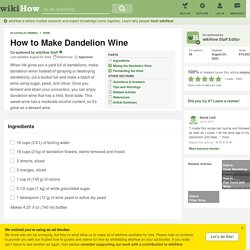
This article has been viewed 674,302 times. Co-authors: 45 Updated: August 24, 2020 Views: 674,302 Article SummaryX. Are Japanese Beetles Edible? Are Grubs? So you’re thinking about eating a Japanese beetle and you want to know if it’s going to kill you or not, right?
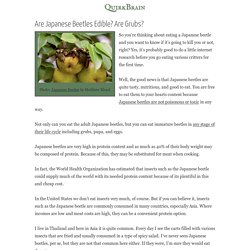
Yes, it’s probably good to do a little internet research before you go eating various critters for the first time. Well, the good news is that Japanese beetles are quite tasty, nutritious, and good to eat. Are Japanese Beetles Edible? Are Grubs? Eating Bugs - Free Food from Your Backyard. Sharing is caring! Save Raspberry glazed cicadas, marinated dehydrated stink bugs, sweet pickled dehydrated grasshoppers, marinated dehydrated June bugs and mealworms in the middle.
I’m sharing this guest post from Paul Landkamer of Missouri Entomophagy because if you’re visiting this site, chances are you’ve already challenged the status quo and are open-minded enough to get past the initial “ick” factor of eating bugs to the practicality of eating bugs. For those brave souls who never back down from a challenge, read on. What is Entomophagy? Entomophagy (en-toe-MOFF-ah-jee) is a cool word for a cool practice. For this article, and when talking entomophagy with just about anyone, we broaden the ento-part to include other critters under the blanket term, “bugs”. Intentionally eating bugs triggers many responses. 15 insects you can eat. From beetles and butterflies to dragonflies and lice, bugs from the following orders are all good enough to eat.
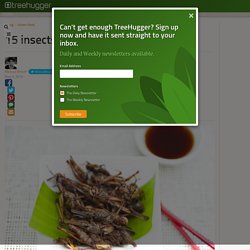
Not being much of an eater of things with legs in the first place, partaking of those from the creepy-crawly family of edibles doesn’t hold much appeal to me personally. But I might be in the minority there, especially when considering entomophagy from an international perspective. We may be squeamish here in the United States when it comes to binging on bugs, but people all over the world smartly consume insects. In fact, some two billion people across the globe eat a wide variety of insects regularly. They are a fantastic source of protein and don’t require intensive resources to produce; and they have little environmental impact, unlike the livestock that we are so reliant on here. Given the food crunch the globe is in, all I can say is this: Bring on the cricket skewers and roasted water bugs, the smoked tarantulas and candied ants. 1. Consent Form. Medicinal wild plants have been collected from the landscape and added to home gardens for centuries.
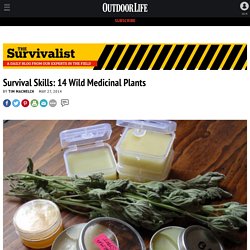
In modern times, the cultivation and use of these healing plants may represent a healthier way of living to the homesteader crowd, and a sustainable re-supply plan for preppers and bug-out enthusiasts. While these home remedies should never take the place of professional medical care, it's nice to have a sense that you are not helpless, should you end up fending for yourself. Below is a list of 14 great plants that you can find in the wild places. Some can even be picked up at garden centers and added to your own personal medicine garden. 1. Yes, the berries are delicious, but did you know that blackberry leaves are helpful for diarrhea? Make the best lemonade you've ever tasted by adding bruised lemon balm leaves to the drink. 3. 4. The Seven Rules for Foraging for Wild Foods: Know Before You Go.
23 Medicinal Plants the Native Americans Used on a Daily Basis - Ask a Prepper. Minnesota Edible and Medicinal Plants. Plants The main purpose of this mission is to have fun foraging wild edible plants.
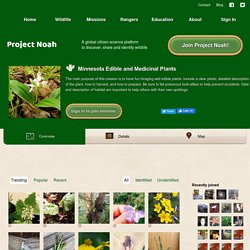
Include a clear photo, detailed description of the plant, how to harvest, and how to prepare. Edible Wild Plants: 19 Wild Plants You Can Eat to Survive in the Wild. So you’re stranded in the wilderness. You consumed the last nub of your Clif Bar two days ago, and now you’re feeling famished. Edible Wild Plants: 19 Wild Plants You Can Eat to Survive in the Wild. Wild Food School - Some Edible & Poisonous Berries. Native Minnesota fruits: a primer. —by Emma Onawa We’ve heard a lot about shopping and eating locally lately.
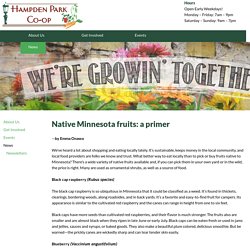
It’s sustainable, keeps money in the local community, and local food providers are folks we know and trust. What better way to eat locally than to pick or buy fruits native to Minnesota? There’s a wide variety of native fruits available and, if you can pick them in your own yard or in the wild, the price is right. Many are used as ornamental shrubs, as well as a source of food. Black cap raspberry (Rubus species) The black cap raspberry is so ubiquitous in Minnesota that it could be classified as a weed. Black caps have more seeds than cultivated red raspberries, and their flavor is much stronger. Blueberry (Vaccinium angustifolium) Infographic: Poisonous vs. Edible Berries. 2 Best Ways to Identify Common Poisonous Berries in North America. 5 poisonous berries that you should steer clear of – and 3 wild berries you can eat. A number of common houseplants and decorative plants have highly toxic berries, which make them a risky choice to keep around if you have small children or pets that can't resist the allure of a colourful, juicy-looking berry.
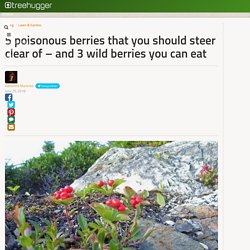
By learning what's edible and what's not, you can also take advantage of the berry bounty that may exist in nature close to your home. Read on to find out which berries are best avoided and which can be foraged for local and seasonal eating. Avoid: Mistletoe This popular Christmas decoration has white or pink berries that grow in clusters. The entire plant is toxic, although the leaves contain more poison than the berries. Please eat the dandelions: 9 edible garden weeds. All too often, homeowners and gardeners wage war in their lawns and gardens against the plants that grow incredibly well there, but that aren't intentionally planted, and many times, the justification for these battles all comes down to the words we use to describe them.
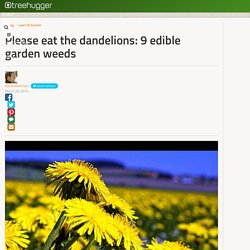
When we buy and plant packets of common flower, vegetable, or herb seeds, we spend a lot of time, energy, and water in our efforts to get those seeds to germinate and grow, and take pride in our green thumb and homegrown food supply. But when a plant that we identify as being a weed is found growing in our lawn or garden, out comes the trowel and hoe (or for the ruthless and impatient gardeners, weedkillers such as RoundUp), and we may spend the entire growing season keeping these opportunistic and resilient plants at bay, in order to have neat and tidy garden beds and uniform lawns. 1. Dandelion 2. 3. Creeping Charlie: Pictures, Flowers, Leaves and Identification. To support our efforts please browse our store (books with medicinal info & subscriptions).
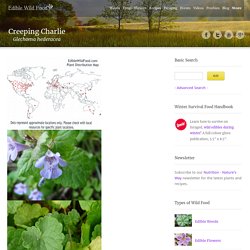
If you were to search for Creeping Charlie on the Internet you'll quickly discover that there are more websites that offer suggestions to eradicate this plant instead of eating it. This aromatic, perennial, evergreen creeper is in the mint (Lamiaceae) family. Creeping Charlie is an herbaceous plant that spreads by seed and by stolons (creeping stems). Native to Europe, it was brought to North American by the European settlers as medicine and as a ground cover. This minty edible contains a lot of vitamin C and offers a multitude of health benefits. Harvesting Wild Food Plants in Minnesota - Do It Green! Minnesota. Pinterest. Pinterest. Pinterest.